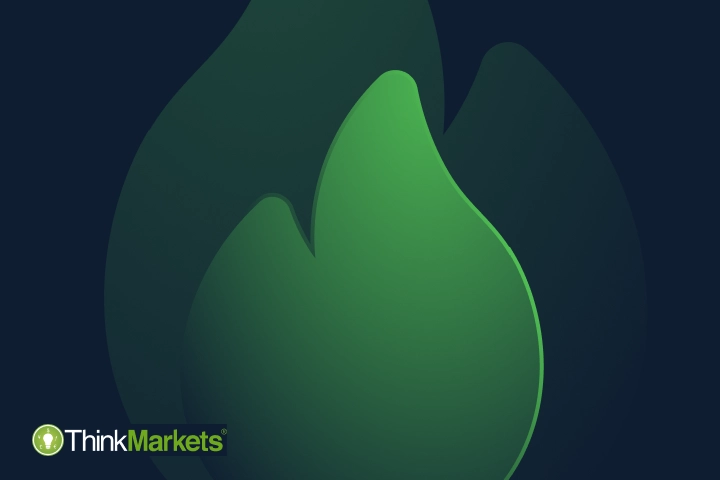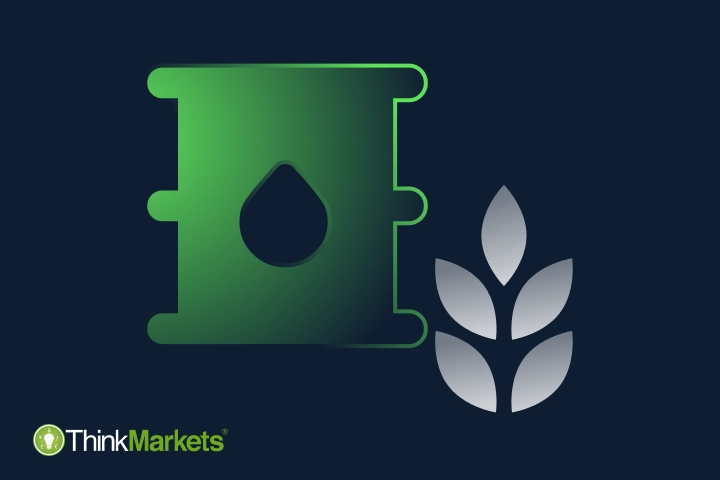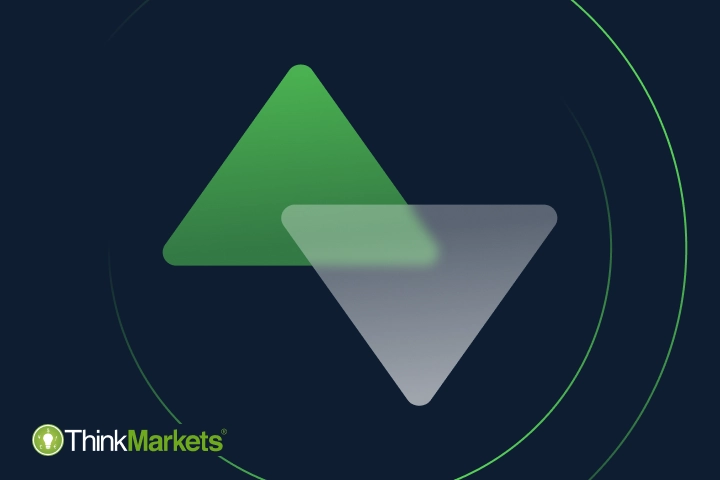Articles (3)

What are commodities, and how does the commodity market work?
<p paraeid="{77b08084-55df-414f-a05a-e7bbe41122e7}{62}" paraid="1480891234">The commodity market is the oldest existing financial market in recorded human history. Thousands of years ago, before paper money was invented as a unified medium of exchange, people used to barter commodities such as crops or cattle. At a later stage, many parts of the world used coins made of various metals as a form of payment. Even with the invention of modern currencies, reliance on commodities – gold in particular – remained in the form of the gold standard. This mechanism meant that a fixed price for gold was used to determine the value of a currency up until the 1970s. It was eventually abandoned to be able to adjust currencies to economic growth and have more flexibility to regulate other economic indicators, such as interest rates. However, gold, along with other commodities, remained an important part of the financial markets. <br /> </p> <p paraeid="{77b08084-55df-414f-a05a-e7bbe41122e7}{84}" paraid="563053549">The origins of commodity markets can be traced back to the need for agricultural producers to manage risk and secure a selling price for their goods ahead of the harvest. This led to the development of forward and futures contracts. One of the earliest examples of such a system was the Dojima Rice Exchange in Japan, established in the 17th century. <br /> <br /> In this article, we'll focus on the commodity market and explain what commodities are, what are the most popular commodities among traders and why commodity trading can be beneficial for your strategy. If you'd like to know more about the stock market instead, head to our <a href="/en/trading-academy/stocks/what-are-stocks">stocks</a> and <a href="/en/trading-academy/indices/what-is-a-stock-market-index">indices</a> articles.</p> <h2>What are commodities?</h2> <p>Commodities are raw materials that can be mined, grown or processed. These raw materials are usually divided into hard and soft commodities.<br /> <br /> Hard commodities include natural resources, such as precious metals (gold, silver, and others), and energy (oil and gas), used to manufacture finished goods or generate power.<br /> <br /> Soft commodities include agricultural products ready for producing food or materials in their final form – wheat, coffee, cattle., etc.</p> <br /> <img alt="" src="/getmedia/ed861ada-ea29-42e2-a541-428f1a0154e4/article-what-are-commodities-diagram.webp" /> <p><br /> Hard commodities are usually more popular than soft commodities among traders due to their longer shelf life and lesser dependence on weather conditions.</p> <h2>Top 4 most popular commodities to trade</h2> <h3>Brent crude oil (BRENT)</h3> <p>Brent oil is one of the most traded commodities in the world. It is extracted from the North Sea in Northern Europe and is usually used to produce diesel and gasoline. Brent's price is slightly different than, US crude oil (WTI) due to export limitations on WTI and the different types and quality of oil. Brent is also considered more influential in the world due to its proximity to Europe, Africa and AsiaMiddle Eastern oil producers also use Brent as a benchmark when setting their prices. </p> <h3>US crude oil (WTI)</h3> <p>US crude oil, also called West Texas Intermediary, is extracted in the US, mostly in Texas. WTI has a lower sulphur content than Brent, making refining it easier and cheaper. However, geographical location makes international transportation of WTI more challenging. WTI is usually used for the same purpose as Brent. Hence despite the slight difference, their prices are usually very correlated.</p> <h3>Natural Gas (NGAS)</h3> <p>Natural gas is an important energy source used for heating, cooking and electricity generation. It is often found in the same areas as oil. However, unlike oil, gas produces fewer emissions when burning, which makes it a much cleaner and more versatile energy source that can be used as a fuel to power various machines, compared to oil-based products.</p> <h3>Gold (XAUUSD)</h3> <p>Gold doesn't need much introduction. For centuries, the yellow metal has been used in the form of money, as an investment instrument, and as a hedge against currencies' volatility. Gold is mined in multiple countries, with China, Russia and Australia topping the exporters' list. The main applications of gold nowadays are jewellery, electronic parts and money, as many governments keep gold reserves in their central banks as an indicator of financial health.</p> <h2>What is the commodity market?</h2> <p>The commodity market is a centralised financial market that gives producers and consumers of various commodities access to each other's services. Like the stock market, the commodity market consists of dozens of commodity exchanges worldwide, connected electronically.<br /> <br /> What sets a commodity exchange apart from a stock exchange is that the former transacts in commodities while the latter transacts in securities. </p> <h2>What are the benefits of trading on the commodity market?</h2> <p>The commodity market offers multiple benefits to traders, such as:</p> <h3>Diversification</h3> <p>Commodity instruments can be beneficial to any trading portfolio as they offer great diversification. Many commodities are often inversely correlated with other financial markets, which means they move in opposite directions, presenting multiple trading opportunities.</p> <h3>Hedge against inflation</h3> <p>Traders and investors have been using commodities, especially gold as a safe-haven asset and protection against depreciating currencies for years. In times of high inflation, it becomes more expensive to buy commodities, and their prices often start rising, attracting a lot of traders.</p> <h3>Steady demand</h3> <p>No matter the global economy's state, commodities are always in demand. People always need power and food. Even when oil and gas are replaced by clean and renewable energy and precious metals run out, people will always need agricultural products; hence there will always be a steady demand.</p>

How to trade commodities
<p>There are two types of traders in the commodity market. The first type mentioned in our <a href="/en/trading-academy/commodities/what-are-commodities">What are commodities, and how does the commodity market work</a> article is producers and manufacturers. These commodity traders are interested in the physical exchange of materials they produce or need for manufacturing. This category also includes investors who physically purchase precious metals like gold as a store of value.<br /> <br /> The second type is institutional traders that speculate on commodity prices purely for personal gain. Since online trading brokers like ThinkMarkets don't offer a physical exchange of assets, we'll focus on speculative trading in this article.</p> <h2>Commodity futures vs commodity CFDs</h2> <p>Commodities can be traded on the spot market, meaning you get physical product delivery. But this is impractical and costly as you need to safely store the item/s.<br /> <br /> If you’re just interested in speculating on the price change of a commodity, then an alternative to buying "spot" is to buy on the futures market. Suppose you were to purchase a futures contract with a three-month expiration date. If the contract's price rises at any point during this period, you’ll make a profit- you even have the option to sell it before it converts into a spot transaction upon expiry. Conversely, if the price declines, you can also opt to sell at a loss to prevent further potential losses before the contract matures.<br /> <br /> A commodity CFD is a contract between a retail broker and a client that follows the price movements of the underlying future.. The benefit of a commodity CFD is that it offers leverage, is cheaper to trade, and you can also trade in smaller sizes. The drawdown is that the CFD are not listed on an exchange, like futures are, which makes them less transparent.Yet, it is still the most popular way for retail traders to trade the markets. With CFDs, there is no expectation of receiving the physical commodity, and the futures contract is closed just before it turns into a spot deal.</p> <h2>How to trade commodities with CFDs</h2> <p>A CFD is one of the most popular derivatives in the trading world. Traders are usually attracted by an appealing offer CFD trading provides – speculation on the price movements of a commodity without buying it. If you are not familiar with the concept of CFD trading, we’ve covered it in detail in our <a href="/en/trading-academy/cfds/what-are-cfds">CFD trading: a beginner’s guide</a>.<br /> <br /> In a nutshell, CFDs track the real-time price movements of an underlying asset, whether it’s the current price of an instrument or its futures contract. Let's see how it works in a Brent oil trade example.<br /> <br /> In CFD trading, two types of trades (orders) are available, depending on the direction of the price movement: a long trade and a short trade.</p> <h3>Going long</h3> <p>Let's say the current price of BRENT is USD 85, and your research indicates that its price will go up. You place a long (buy) trade, and the price increases to USD 95. In this case, you profit from the price difference. If your prediction is incorrect and the price drops to USD 75 instead, you incur a loss. </p> <img src="/getmedia/6484b507-a8f7-4db8-9744-c01fbd553de3/article-how-to-trade-commodities-long.webp" /> <h3>Going short</h3> <p>If your research indicates that the price is going to drop, you open a trade in the opposite direction – going short (sell). If your prediction is correct and the price goes down to USD 75, the price difference is your profit. Should the market move in the opposite direction and reach USD 95, the price difference becomes your loss.</p> <img src="/getmedia/433f3338-d9c8-480d-9e97-1cd80cfc9eaa/article-how-to-trade-commodities-short.webp" /> <p>Now let’s see how you can calculate your profit or loss in these trade examples.</p> <h3>Lots</h3> <p>A lot represents a contract size in trading, which depends on the underlying asset this contract tracks. One standard lot has a set number of units of this asset. For example, in forex, it's units of currency, and in the stock market, it's the number of shares.<br /> <br /> The commodity market doesn't have a standardised measurement of units, as all commodities are different in shape and form. For natural gas, for example, one lot means 1,000 Btu (cubic feet). For gold – 100 ounces (about 2.83 kg). For BRENT and WTI – 100 barrels. In our trading example above, the contract size is 0.1 lot.<br /> <br /> You can find more details about every instrument on our <a href="/en/contract-specifications">Contract specifications </a>page.<br /> <br /> Now that you know about tick value and lots, let’s see how we can calculate profit in our first example, where we go long on BRENT. We have the following data:</p> <ul> <li>Entry spot: USD 85</li> <li>Exit: USD 95</li> <li>Tick value: 0.01 = USD 1 </li> </ul> <p>Here is the formula you can use:</p> <p>Price difference/tick size × contract size = Profit/Loss in USD</p> <p>(USD 95 - USD 85 = USD 10)/0.01 × 0.1 = USD 100</p> <p>Another important thing to understand is that CFD trading is leveraged, so when you open a trade at USD 85, you don't need to pay the full amount.</p> <h3>Leverage</h3> <p>Leverage is the process of using funds borrowed from a broker to open trades of a bigger size than your initial capital allows. To use these funds, traders are required to put down a small deposit, called a margin.<br /> <br /> With ThinkMarkets, you can trade Brent oil with a 100:1 leverage. It means that you only need to deposit 1/100th of the trade worth:</p> <img src="/getmedia/f6de5f4b-a76d-4610-8603-6c196cfd1d05/article-how-to-trade-commodities-leverage.webp" /> <p>It is crucial to understand that even though your capital is much smaller than the actual trade worth, leverage multiplies your profit and loss.<br /> <br /> When your capital is USD 8.5 instead of the full amount of USD 85, in a successful trade, your profit is multiplied and would still be USD 100 – bigger than your initial capital. However, if your trade is losing, the loss will also be bigger than your capital. That's why using risk management tools like stop loss and take profit when trading CFDs is crucial.<br /> <br /> This summarises the basic terms a trader needs to understand before getting started with commodity trading. In our next article, What affects commodity prices?, we'll explain the driving forces behind commodity prices to help you identify trading opportunities and understand whether you should choose a long or short trade.</p>

What affects commodity prices?
<p aria-level="2" paraeid="{e924138a-6dcb-453d-9c78-dc877d0b0cb4}{219}" paraid="578068771" role="heading">The price formation of any financial instrument on any market is subject to supply and demand. However, since commodities are natural resources and materials, the dependence of the commodity market on supply is much heavier than in any other market. In fact, the scarcity of these resources is exactly what makes them so valuable. Moreover, hard commodities like oil, gas or precious metals are not renewable, which only adds to their value. </p> <p paraeid="{e924138a-6dcb-453d-9c78-dc877d0b0cb4}{225}" paraid="1650331047">Following the law of supply and demand, a deficit in supply and steady demand usually leads to increasing prices and vice versa. Here are some of the major factors that affect price movements in the commodity market and can signal potential trading opportunities: </p> <p><br /> <br /> <img alt="" src="/getmedia/b291aca4-b0c4-4abb-b06e-fe873c2ec867/article-what-affects-commodities-prices-factors.webp" /></p> <h3>Natural disasters</h3> <p>Since commodities are mined, extracted or grown, nature plays a significant role in these processes. A flood, drought or other severe weather conditions can disrupt the extraction. When it comes to soft commodities like wheat or corn, crops can simply be destroyed entirely. Moreover, unfavourable weather can also impact supply lines and make transportation and exports more difficult. Hence, whenever any of these events happen, it can reduce the supply drastically, and with the same level of demand in place, prices of affected commodities may start climbing. <br /> <br /> Keep in mind that nature also plays a role in seasonality. For example, agricultural commodities are seasonal, and their prices tend to decrease during harvest due to the influx of new crops. Natural disasters affecting commodity supply, like hurricanes, in many parts of the world can also be seasonal.<br /> <br /> Another seasonal trend to look out for is the US summer driving season. During warm months, people tend to travel more, increasing the demand for gasoline and driving the price of crude oil up.<br /> <br /> On the other hand, during cold months, traders usually see an increase in other energy products, such as natural gas, as it's widely used for heating.</p> <h3>Geopolitical tensions</h3> <p>Any prolonged political or geopolitical unrest, whether its localised strikes, territory dispute or war, affects supply channels. The Russian invasion of Ukraine is one great example to demonstrate how it works. Both countries are in the league of the largest commodity suppliers – oil and gas on the Russian side and wheat and corn on the Ukrainian. Sanctions applied to Russia and blocked by war supply chains in Ukraine caused a lot of volatility in the commodity market. </p> <h3>Currency exchange rates</h3> <p>Fluctuations in currency exchange rates are usually caused by inflation, interest rates and other economic indicators. As most commodities are traded against the US dollar, they are dependent on its value. Compared to other currencies, the USD's appreciation or depreciation can affect commodity prices, making buying the same materials cheaper or more expensive. </p> <h3>Economic growth or shocks</h3> <p paraeid="{5eba7bd5-70b9-4970-bfb4-bb9c5d629148}{105}" paraid="1068723066">Growing economies require a steady supply of commodities to produce various goods. Increasing demand with limited supply may lead to rising commodity prices. On the flip side, in times of crisis and crashing financial markets, people often turn to safe-haven assets like gold, driving their prices up. </p> <p paraeid="{5eba7bd5-70b9-4970-bfb4-bb9c5d629148}{115}" paraid="1345993558">However, as the infamous COVID-19 pandemic showed, economic turmoil means decreased production and demand for other commodities, like oil, which inevitably leads to lower prices. </p> <h2>How to trade commodities</h2> <p paraeid="{5eba7bd5-70b9-4970-bfb4-bb9c5d629148}{135}" paraid="365515749">With ThinkMarkets, there are two ways of doing it: commodity CFDs, stocks, and ETFs. <br /> </p> <p paraeid="{5eba7bd5-70b9-4970-bfb4-bb9c5d629148}{181}" paraid="137634938">Commodity stocks are shares of the companies that mine, produce or process commodities. Some examples of popular commodity companies are Newmont Mining (NEM), Devon Energy (DVN) and Wheaton Precious Metals (WPM). Their price movements are usually correlated with the price of commodities they deal with. <br /> </p> <p paraeid="{5eba7bd5-70b9-4970-bfb4-bb9c5d629148}{187}" paraid="1179293991">Commodity ETFs are exchange-traded funds that are invested in commodity futures contracts. Some of the most popular commodity ETFs are iShares GSCI Commodity Dynamic Roll Strategy ETF (COMT), Invesco DB Commodity Index Tracking Fund (DBC), and iShares Gold ETF (IAU). <br /> </p> <p paraeid="{5eba7bd5-70b9-4970-bfb4-bb9c5d629148}{209}" paraid="716910402">With ThinkMarkets, you can trade both commodity stocks and commodity ETFs, as well as CFDs. A commodity CFD tracks the price of the underlying commodity in a futures contract, giving you giving you direct exposure without the hassle. <br /> </p> <p paraeid="{7982c857-0853-4e82-9d1c-27b7f22c303c}{34}" paraid="343195021">If you are just starting out your trading journey, it is highly advisable to practice trading on a <a href="/en/demo-account">risk-free demo account</a> first.</p>